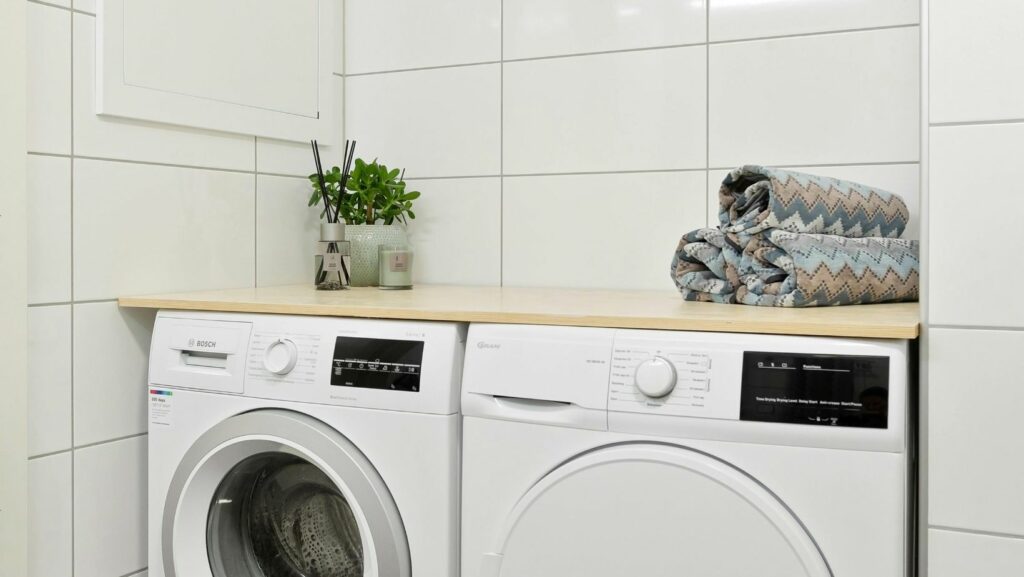When it comes to household appliances, washing machines are among the most commonly used in most homes. While they provide essential cleaning services, they can also be significant consumers of water. The question on many homeowners’ minds is: “How much water does a washing machine use?” Understanding the answer to this question can help you save both water and money on your utility bills.
In this article, we’ll explore the water usage of washing machines, the factors that impact it, and how you can maximize efficiency to reduce consumption and lower your water bills.
How Much Water Does a Washing Machine Use?
The amount of water a washing machine uses depends on the type of machine, its efficiency, and the cycle settings. On average, a traditional washing machine uses about 40 to 45 gallons (151 to 170 liters) of water per load. In contrast, high-efficiency washing machines use less water—typically between 15 and 30 gallons (57 to 114 liters) per load.

The variation in water usage is due to several factors, such as the model, age of the washing machine, and the type of wash cycle you choose. For instance, a regular or heavy-duty cycle usually requires more water than a quick wash or delicate cycle.
Factors Affecting Water Usage in Washing Machines
1. Type of Washing Machine
There are two main types of washing machines: top-loading and front-loading. Each type uses a different amount of water, with front-load washers generally being more water-efficient.
- Top-loading machines: Traditional top-load washing machines are typically less efficient when it comes to water usage. They use a full tub of water for every wash cycle, even if the load is small. These machines can use up to 45 gallons of water per load.
- Front-loading machines: Front-load washers, on the other hand, use a horizontal drum that requires less water to fill. They generally use between 15 and 25 gallons of water per load. Due to their efficiency, front-loading machines have become a popular choice for homeowners looking to reduce water and energy consumption.
2. Washing Machine Capacity
The size of the washing machine drum plays a significant role in determining how much water does a washing machine use. A larger drum can hold more clothes, but it may use more water. However, if you regularly wash full loads, the machine can be more efficient since it uses more water for larger loads.
For households that don’t wash large amounts of laundry regularly, smaller machines with a smaller drum may be a better option to save water and energy.
3. Cycle Settings
The cycle you choose for washing clothes can also impact water usage. Washing machines offer different settings like “heavy duty,” “delicate,” “quick wash,” and “eco mode.”
- Eco Mode: Most modern washing machines have an eco mode or energy-saving cycle. This cycle uses less water and energy, making it an excellent choice for reducing water consumption.
- Heavy Duty Cycle: This cycle uses more water as it is designed to clean heavily soiled clothes, making it less efficient for regular use.
If you’re looking to conserve water, it’s important to choose the right cycle based on the level of dirt on your clothes. Opt for quick or eco-friendly cycles when washing lightly soiled laundry to reduce water usage.
4. Water Efficiency Rating
Washing machines come with different water efficiency ratings. The Energy Star label is a reliable indicator of a machine’s energy and water efficiency. Energy Star-certified washing machines use 20% less water than conventional models, which can help reduce your monthly water bills.
It’s always worth checking the water usage specifications before purchasing a washing machine, especially if you are concerned about how much water does a washing machine use.
How to Maximize Washing Machine Efficiency
Now that we understand how much water does a washing machine use and the factors that impact water consumption, let’s explore actionable steps to maximize washing machine efficiency and save water and money.
1. Use Full Loads
One of the simplest ways to reduce water usage is to always wash full loads. Washing machines are designed to use a set amount of water for each load, regardless of its size. Washing small loads wastes water and energy.
Before starting a wash cycle, try to gather enough laundry to fill the machine. However, avoid overloading the washing machine, as it can affect performance and lead to inefficient washing.
2. Choose Eco-Friendly Cycles
As mentioned earlier, many modern washing machines feature an eco-friendly or energy-efficient cycle. These settings use less water and energy by reducing the length of the cycle or optimizing the water levels for the load. If your washing machine has this feature, use it as much as possible to save water.
3. Use Cold Water for Washing
Washing clothes with hot water consumes a significant amount of energy and water. Most clothes can be effectively cleaned using cold or lukewarm water. Cold water washes are not only better for conserving water, but they also help to preserve the fabric of your clothes, reduce fading, and lower energy costs.
Check the care labels on your clothes, as some items may require hot water for optimal cleaning. But, when possible, try to wash with cold water to reduce your washing machine’s water usage.
4. Maintain Your Washing Machine
Proper maintenance can ensure that your washing machine is operating efficiently. Over time, lint, detergent residue, and dirt can accumulate inside the machine, making it harder for the washer to function effectively and requiring more water for cleaning.
To maintain your washing machine:
- Clean the lint trap regularly.
- Run a cleaning cycle with a washing machine cleaner every few months.
- Ensure the hoses are in good condition and not leaking.
A well-maintained washing machine will be more efficient, using less water per wash cycle.
5. Upgrade to a High-Efficiency Washing Machine
If your current washing machine is old and uses more water than necessary, it may be time to consider upgrading to a high-efficiency model. High-efficiency washing machines, especially front-loaders, use less water and energy compared to traditional top-loaders.
While the upfront cost may be higher, the long-term savings on water and energy bills can make it a worthwhile investment. Plus, many modern high-efficiency machines are designed to handle larger loads, further maximizing your water savings.
6. Check for Leaks
Leaks in your washing machine can significantly increase water usage and cause unnecessary waste. If you notice water pooling around your washing machine, inspect the hoses, seals, and connections to check for leaks.
If you find any leaks, replace the faulty parts immediately to prevent wasting water and raising your utility bills.
7. Consider a Water-Efficient Washing Machine for Large Families
If your household does a lot of laundry, investing in a washing machine with a larger capacity and higher water efficiency can help minimize water waste. Some models are specifically designed for large families, reducing the number of loads and water used overall.
For large households, a high-efficiency, large-capacity washer can be a practical solution to save both water and energy while ensuring laundry gets done efficiently.
How Much Water Does a Washing Machine Use: Recap
To recap, the amount of water a washing machine uses varies depending on several factors, such as the type of machine, its capacity, the cycle setting, and whether it is a high-efficiency model. On average, traditional washing machines use 40 to 45 gallons of water per load, while high-efficiency washers use between 15 and 30 gallons per load.

By choosing the right machine, maintaining your washing machine, using full loads, and opting for eco-friendly cycles, you can significantly reduce your washing machine’s water consumption. This, in turn, will help lower your water bills while contributing to water conservation efforts.
Conclusion
Knowing how much water does a washing machine use and understanding the factors that influence water consumption can empower you to make more informed choices about how to operate your washing machine efficiently. By implementing these tips, you can reduce water waste, lower your bills, and help preserve water for the future.
Remember that even small changes—like switching to an eco-cycle or washing with cold water—can add up over time. Taking these steps not only benefits your wallet but also supports sustainable living and environmental conservation.

